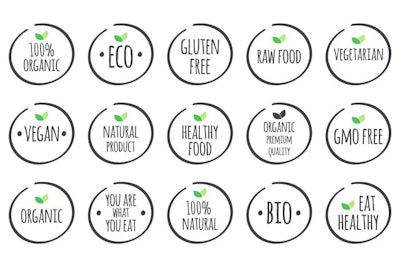
There are plenty of myths that surround poultry and other food production. They can be firmly entrenched in the consumer psyche, spread quickly via social media, and appear ever more credible as fewer consumers have contact with animal or other agricultural production, making the job of the food producer more difficult.
Speaking at the end of April at the 4th International Poultry Meat Congress, held in Antalya, Turkey, Christine Agnes of Elanco Animal Health pointed out that the combination of a drift to the city and the internet giving a platform to anyone to say almost anything, has put consumers in a difficult position of not knowing what to believe, which also puts producers in a difficult position.
Producers, however, do not have to be defenseless against consumer misperceptions and accusations. But if consumer myths about livestock production are to be countered, misconceptions first must be identified and understood.
Organics, hormones, antibiotics
Agnes pointed delegates to The Truth About Food Survey, conducted on behalf of the Enough Movement, and which was conducted in 11 countries across the Americas and Europe.
If you are not familiar with the Enough community, which was established by Elanco, it describes itself as a “global community working together to ensure everyone has access to nutritious, affordable food – today and in the coming decades. It comprises consumers, business and everyday people passionate about practical solutions to build a food-secure world.”
The Truth About Food Survey results, which recently went online, make interesting reading.
For example, two-thirds of survey respondents said they bought organic because they thought it was more nutritious, while 70 percent felt organic was better for the environment. This may raise a few eyebrows, but organic is not the only source of confusion for consumers.
Labels touting no added hormones and no antibiotics are also causing confusion for consumers. More than 60 percent of respondents thought that no added hormones meant there were no hormones in the product, failing to realize that there would be naturally occurring hormones, while 25 percent of respondents felt that this claim meant the product would be of higher quality.
Where antibiotics are concerned, about one-third of respondents thought meat not labeled as antibiotic free would contain antibiotics, unaware of medicine withdrawal periods and residue testing.
Learn The Truth
Uncovering consumer misconceptions is all very well, but most of us probably already have a reasonable idea of what some of them may be. The survey website, however, goes further than simply listing findings; it gives producers material that can be used to counter these ideas.
It offers the “reality” where these misconceptions are concerned, and a series of “Truths,” for example, The Truth About Antibiotics, The Truth About Hunger, and The Truth About Food Waste and Loss. Additionally, it provides video stories and some well-designed infographics.
In addition to the survey webpage, the Enough Movement is doing a good job of posting the findings on social media, helping to spread an industry perspective.
Scanning down through the movement’s Facebook page makes for interesting reading, not only because the counter-arguments are neatly packaged and easy to understand, but also because discussion from both sides has grown around them.
So if you want to have a deeper understanding of what consumers might be thinking about poultry meat and other agricultural production, and pick up some tips on how to counter any ideas that don’t chime with reality, perhaps take a look at The Truth About Food.


















